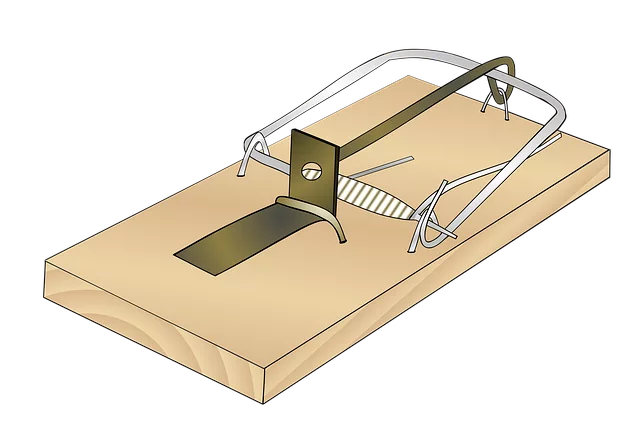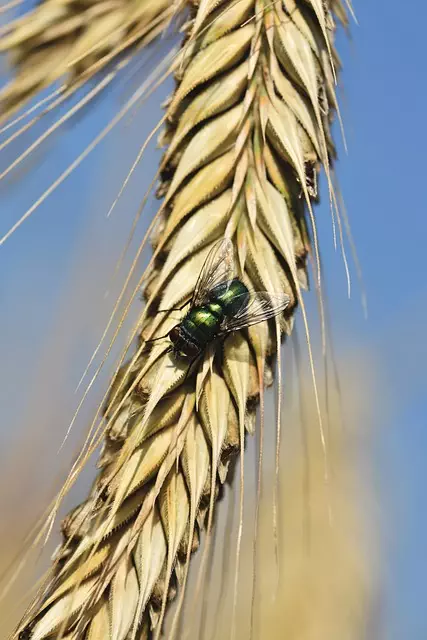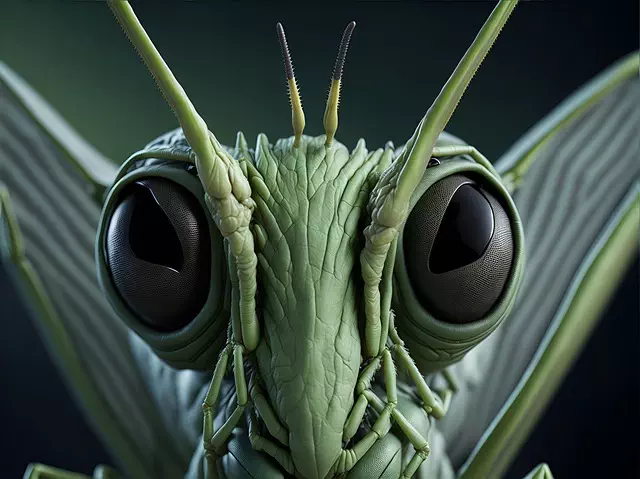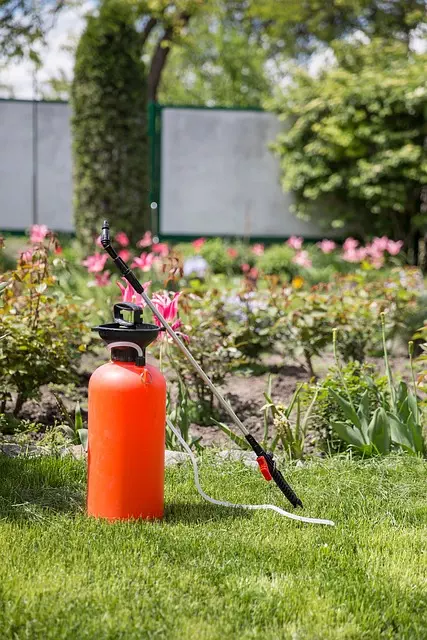This text provides a comprehensive guide to effective bug extermination, emphasizing the importance of understanding common pests like ants, cockroaches, termites, and rodents. It highlights key strategies such as early detection through sign identification, proactive prevention measures, and the critical role of hiring a reputable pest exterminator. The guide explores eco-friendly non-chemical methods alongside professional insecticide applications, underscoring safety and precision in pest control. Post-extermination, it emphasizes preventive actions to deter reinfestation, reinforcing the enduring solution achieved through professional intervention.
Looking to reclaim your space from unwelcome visitors? Effective bug extermination is key. This comprehensive guide navigates the intricate world of pest control, empowering you to make informed decisions. From understanding common pests and their behaviors to exploring non-chemical methods and professional insecticide application, we cover it all. Learn how to prevent reinfestation and understand legal considerations for a safe, successful elimination process. Discover your go-to strategies for hiring the right pest exterminator tailored to your unique needs.
Understanding Common Pests and Their Behavior

Understanding common pests and their behavior is a crucial step in effective bug extermination. Pests like ants, cockroaches, termites, and rodents can quickly infest homes and businesses if left unchecked. Each pest has unique characteristics, habitats, and behaviors that influence their activity patterns and food preferences. For instance, ant colonies are highly organized with distinct worker, soldier, and queen roles, while cockroaches prefer dark, humid spaces and are most active at night. Knowing these habits allows homeowners and pest exterminators to target specific areas and implement tailored control measures.
Identifying the signs of pest presence is also vital. Droppings, chewed wires or materials, and distinct odors can indicate an infestation. Regular inspections and proactive measures such as sealing entry points, maintaining cleanliness, and eliminating water sources can prevent pests from taking hold. When infestations do occur, hiring a professional pest exterminator becomes essential for safe and efficient eradication, ensuring that the problem is addressed at its source to prevent future recurrences.
Choosing the Right Pest Exterminator for Your Needs

Choosing the right pest exterminator is a crucial step in ensuring effective and efficient bug extermination. Researching and selecting a reputable company with a proven track record is essential. Look for professionals who specialize in your specific pest issue, whether it’s ants, rodents, or bed bugs. Customer reviews and certifications can provide valuable insights into a pest exterminator’s reliability and the quality of their services.
Consider the methods and products they use. Reputable exterminators employ eco-friendly and safe techniques that are effective without posing risks to your family or pets. They should also offer customized plans tailored to your home or business, addressing unique challenges and ensuring long-term prevention. Effective communication and transparency about treatment processes and costs are signs of a professional dedicated to delivering quality pest control services.
Non-Chemical Methods for Bug Extermination

Non-Chemical methods offer a safer and more environmentally friendly approach to bug extermination, appealing to those who prefer natural solutions or have specific concerns about chemical exposure. These techniques leverage physical, biological, and mechanical means to control and eliminate pests. For instance, pest exterminators might use heat treatments to kill insects, as high temperatures can swiftly and effectively wipe out various pests without leaving behind hazardous residues. Another method is cold treatment, which uses below-freezing temperatures to freeze and destroy pests, a particularly useful technique for treating infested spaces in winter.
Biological control involves introducing beneficial organisms like predators or parasites that target specific pest species, disrupting their population growth. Sticky traps and physical barriers are also popular non-chemical tools. Exterminators can strategically place sticky traps to capture flying insects, while fine mesh screens and seals can prevent pests from entering homes and buildings. These methods not only address existing infestations but also serve as preventive measures, providing long-lasting solutions for pest management without resorting to chemical pesticides.
Professional Insecticide Application Techniques

Professional pest exterminators employ advanced insecticide application techniques for effective bug extermination. These methods involve targeted spraying, where specialized equipment delivers pesticides precisely to infested areas, minimizing exposure to non-target organisms and the environment. Exterminators use high-pressure sprayers or aerosol cans to ensure thorough coverage while avoiding over-application, which can lead to pesticide resistance.
Additionally, professionals employ baiting systems, placing attractive substances infused with insecticides in strategic locations. Insects are drawn to these baits, ingest the pesticide, and then carry it back to their colonies, effectively eradicating the infestation from within. This technique is particularly useful for controlling hard-to-reach pests or those that hide in crevices.
Preventing Pest Reinfestation After Extermination

After a successful bug extermination by a professional pest exterminator, preventing reinfestation is crucial for maintaining a pest-free environment. It involves implementing several strategies to ensure that your home or business remains unattractive to pests and stops them from returning. One effective method is sealing entry points like cracks, gaps in walls, or around windows and doors, eliminating any potential hiding places or access routes for pests. Regular maintenance and cleanliness are also vital; keeping areas free of clutter, promptly cleaning up spills, and ensuring proper food storage can significantly reduce pest attraction.
Additionally, maintaining a healthy lawn and garden, trimming bushes, and removing debris can deter pests from seeking shelter in your outdoor spaces. Using natural repellents like citronella or lavender around entry points may also help keep them at bay. Regular inspections by a pest control professional are essential to identify any early signs of infestation, allowing for swift action to prevent reinfestation. These combined efforts will create an environment that is less welcoming to pests, ensuring long-lasting protection.
Legal Considerations and Safety Precautions in Bug Extermination

When it comes to bug extermination, legal considerations and safety precautions are paramount. Engaging the services of a professional pest exterminator is often the best course of action, as they possess the necessary expertise and adhere to strict industry standards and regulations. These professionals use proven methods and products that are effective yet safe for both humans and pets, minimizing potential health risks.
Compliance with local laws and regulations is crucial to avoid legal repercussions and ensure a safe living environment. Many regions have specific guidelines governing the use of pesticides and insecticides, including restrictions on application areas, timing, and the types of substances allowed. A reputable pest exterminator will be well-versed in these regulations, ensuring that all treatments are conducted legally and safely.



